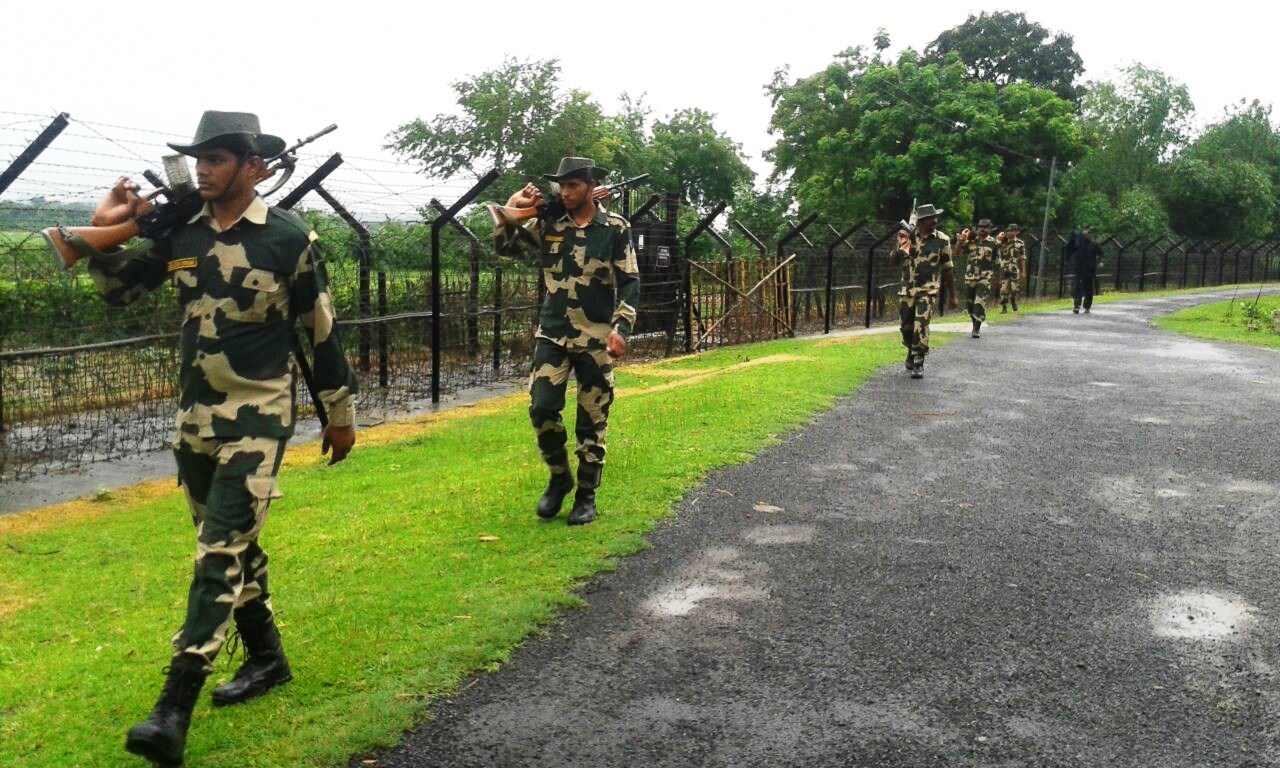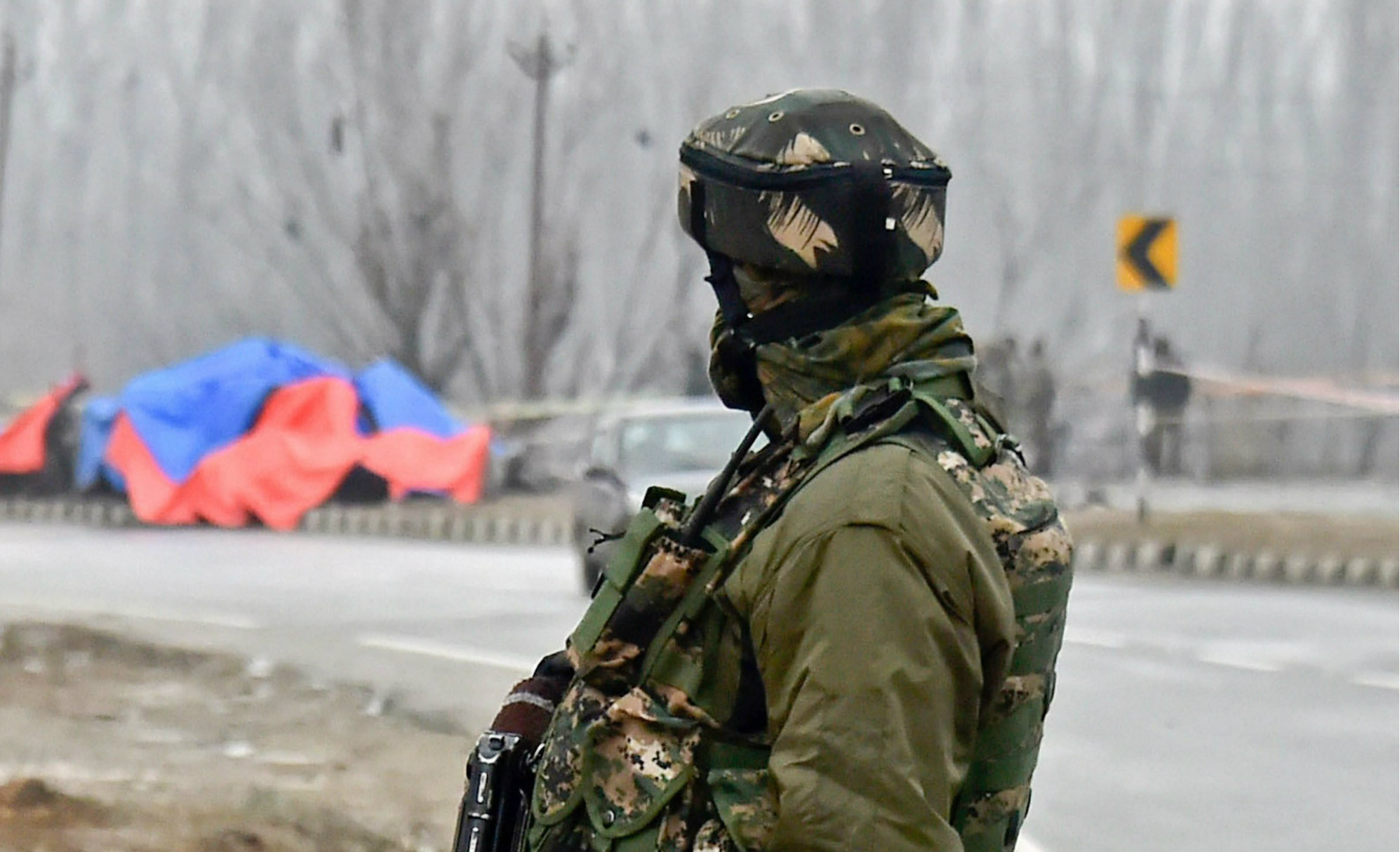The Border Security Force jawan, a Bengali, stood alert, his eyes scanning the lush fields that stood across the border. Borders, I found out in the course of a leisurely conversation with him, often crossed the mind of — let us call him — Mr Pramanick. After stints guarding the nation’s frontiers in Punjab, he had been posted — three months before I met him — to Bagula, a Nadia village, near the border with Bangladesh.
It was August, that steaming, sweaty month, and sweat trickled down Pramanick’s brows. The man, a sleek rifle hung over his shoulders, blinked occasionally, as if his mind’s eye was being irradiated with flashes of memory — of another time, of another country. For members of the soldier’s family had crossed over into India from the very land that he stood watching over, a land that was so near and yet so distant. (Pramanick’s family members were among, according to some estimates, the 10 million refugees who poured into India during the Bangladesh Liberation War.) The man whose family had, years ago, turned a border porous was now, in a twist of fate, responsible for making that very frontier impregnable.
But borders can still be infiltrated.
Smugglers — those who operate and profit from the trade in migrants, bovine and human, across the Indo-Bangladesh border — have been known to do so. But the jawan had a different kind of breaching of the gates in mind. Memories, borne by generations of refugees, have no nationality. They obey no border.
That afternoon, after Pramanick had finished his shift, he and I settled down to share stories without borders. The soldier told me about his grandmother. Years ago, the feisty lady had apparently swum to safety, guided by the flickering torches of mukti bahini volunteers on the Indian side of the border, after her raft capsized in a dark river. The river had swallowed two of her grandchildren as well as a scroll that was prized as an heirloom. But she had found a country, and the freedom that it guaranteed to persecuted people like her.
I told him, in turn, about another woman who had survived not water but fire. Born in Barishal, married into a prosperous family in Kushtia, she had been forced to take a train to cross the border with her young family in the year of Partition. On the way, the locomotive had apparently been stopped by a mob, searching for Hindus fleeing a country that was being shaped out of fire and blood. She survived because of a fortuitous intervention — a Muslim neighbour hid her in the coupe he was travelling in. The story of her survival now flowed through my blood. For that woman, I told the attentive soldier, was my grandmother.
We fell quiet after a while. A light evening breeze was picking up, blowing across the borders. Paper flags — Independence Day was nigh — fluttered merrily. Pramanick lit a bidi and puffed contently as we gazed at the bits of land that could be seen through gaps in the concertina wires. There were thatched houses in the distance, identical to the ones that I had seen while passing through the villages of Bhayna, Bairampur, Ramnagar, Hajrakhal and Ulashi. We could see a few farmers tilling that other land. They wore a hat similar to the toka that farmers here use to shield themselves from sun and rain. Even the fish curry that I had eaten in Bagula was common to both West and East Bengal.
And they say borders, such as the one over which the BSF keeps vigil, are impassable.
But some fences, newer ones that can be spotted within the nation, are proving to be far more resilient. Pramanick spoke of the distance that was creeping in between soldiers and local villagers, many of whom complained about the high-handedness of the border guards. A chasm is also evident within the Namasudras, the dominant community in Nadia. The Matua Thakurbari, the nominal head of the community, is now rife with political factionalism. During the trip, I discovered that the Namasudras, even though they are pioneers in education and reform, remained indifferent towards their Muslim neighbours. The Oraon family I met in Bhayna complained of the fruits of development being cornered by the dominant castes.
Will the borders erected to divide people remain insurmountable? They would, as long as people across fences, real and imagined, choose not to share their stories.












